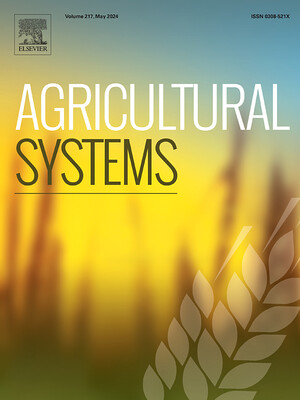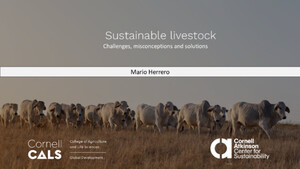
Managing soil fertility to adapt to rainfall variability in smallholder cropping systems in Zimbabwe
Abstract
Adaptation options that address short-term climate variability are likely to lead to short-term benefits and will help to deal with future changes in climate in smallholder cropping systems in Sub-Saharan Africa (SSA). In this study we combined field experimentation and long-term rainfall analyses in Makoni and Hwedza districts in eastern Zimbabwe to evaluate cropping adaptation options to climate variability. Analyses of long-term rainfall data closely supports farmers’ perceptions that the mean annual total rainfall has not changed, but the pattern of rainfall within-season has changed: the number of rainfall days has decreased, and the frequency of dry spells has increased at the critical flowering stage of maize. On-farm experiments were conducted over two cropping seasons, 2009/10 and 2010/11 to assess the effects of planting date, fertilization and cultivar on maize production. Three maize cultivars were sown in each of the early, normal and late planting windows defined by farmers. Each of the nine cultivar-planting date combinations received N, P, K and manure combinations at either zero, low or high fertilization rates. Overall, there were no significant differences in maize development or grain yield among cultivars. Maize grain yield was increased by increasing the amount of nutrients applied. Average yield was 2.5 t ha−1 for the low rate and 5.0 t ha−1 for the high rate on early planted cultivars on relatively fertile soils in Makoni in 2009/10 season. Yields on poorer soils in Hwedza were small, averaging 1.5 t ha−1 for the low rate and 2.5 t ha−1 for the high rate. Maize grain yields for the early and normal planted cultivars were similar for each fertilization rate, suggesting there is a wide planting window for successful establishment of crops in response to increased rainfall variability. Yield reduction of >50% was observed when planting was delayed by 4 weeks (late planting) regardless of the amount of fertilizer applied. Soil nutrient management had an overriding effect on crop production, suggesting that although the quality of within-season rainfall is decreasing, nutrient management is the priority option for adaptation in rain-fed smallholder cropping systems.
Citation
Rurinda, J., Mapfumo, P., Wijk, M.T. van, Mtambanengwe, F., Rufino, M.C., Chikowo, R. and Giller, K.E. 2013. Managing soil fertility to adapt to rainfall variability in smallholder cropping systems in Zimbabwe. Field Crops Research 154: 211-225.










